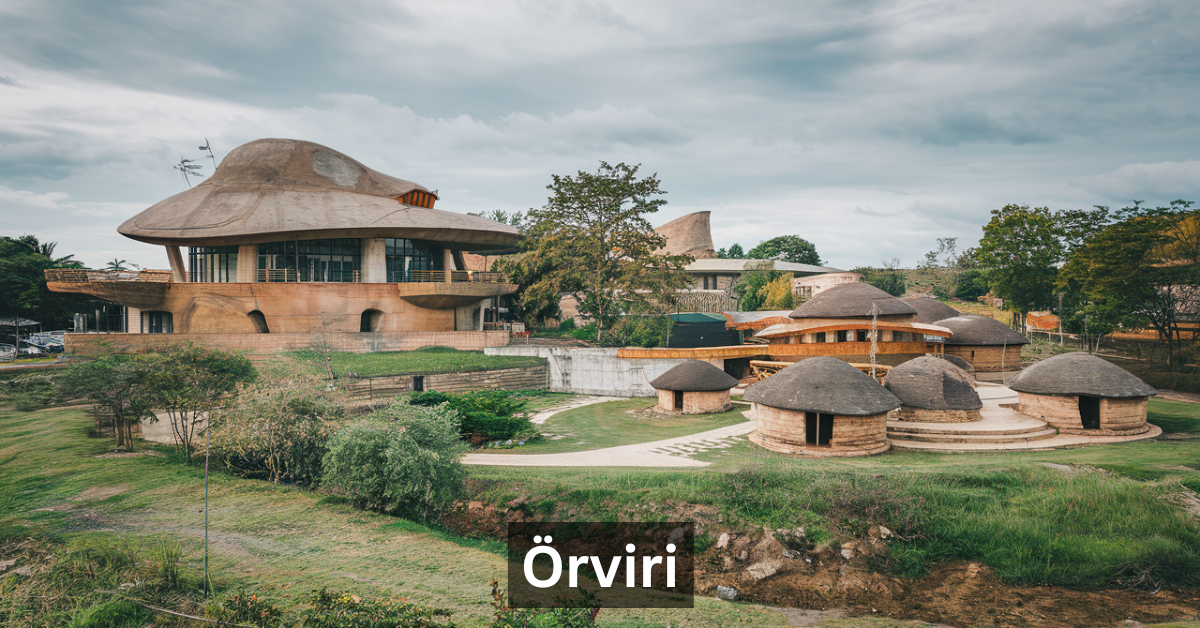The exact meaning of örviri remains mysterious, but it is believed to be linked to wisdom, transformation, and hidden knowledge in Nordic traditions. The word itself appears to be derived from Old Norse, hinting at its association with the ancient traditions of Viking legends, Norse gods, and mystical forces. Some theories suggest that örviri may represent an idea rather than a tangible object, possibly linked to the universal balance between chaos and order. This mysterious term has captured the imagination of many, as it seems to embody a deep and profound spiritual essence that resonates across cultures and time.
Örviri is not commonly found in historical texts, but its significance can be inferred from various elements in Icelandic mythology, Eddic poetry, and Norse traditions. It is often associated with the unseen forces of nature and the hidden truths that shape the world. Some believe that örviri represents an ancient philosophical and mystical path, similar to the esoteric teachings of runes and Viking symbols. Others interpret it as a powerful guiding force that can help individuals navigate the spiritual journey of self-discovery and enlightenment. As modern interest in Norse mythology and Scandinavian folklore grows, örviri continues to gain recognition as a symbol of ancient wisdom and transformation.
In recent years, there has been a resurgence of interest in Nordic spirituality and ancient traditions, as people seek deeper meaning in their lives. With the rise of modern spiritual movements, mythology, and esoteric knowledge, many have turned to Viking legends and Old Norse traditions to rediscover forgotten wisdom. Örviri has emerged as a captivating concept that aligns with personal growth, self-awareness, and the pursuit of higher knowledge. Unlike many well-documented mythological symbols, örviri remains shrouded in mystery, which adds to its appeal. It offers a sense of the unknown and the infinite, much like the concept of Ragnarok, which signifies both an ending and a new beginning.
The growing popularity of örviri can also be attributed to its deep philosophical and symbolic meanings. In a world filled with distractions and material pursuits, people are looking for spiritual connections and timeless truths that transcend ordinary experiences. Örviri, much like the great Norse myths of Yggdrasil and Asgard, offers a gateway to understanding the mystical and hidden forces that shape existence. By exploring örviri, individuals can embark on a journey of self-reflection and inner transformation, much like the Vikings sought wisdom through their runes and sagas.
Unlike widely recognized Norse mythological concepts such as Midgard, Asgard, and Ragnarok, örviri remains a largely unknown and enigmatic term, which only adds to its allure. Some researchers argue that örviri was deliberately kept hidden by ancient scholars, much like certain Nordic runes that were only revealed to those deemed worthy of their knowledge. Others speculate that it may be a lost philosophical idea, passed down through oral tradition but never fully recorded in writing.
One of the most compelling aspects of örviri is its universal and timeless appeal. It is not just a historical relic of the Viking age but a concept that continues to **inspire seekers of wisdomand transformation in the modern world**. Unlike rigid doctrines or structured belief systems, örviri represents a fluid and evolving philosophy, open to interpretation and adaptation. Some believe it symbolizes the hidden energies of the universe, much like the ancient Norse belief in fate (Wyrd) and the interconnectedness of all things. The mystery surrounding örviri makes it a source of fascination for scholars, spiritual seekers, and lovers of mythology alike.
Etymology and Meaning of “Örviri”
Origins of the Word
The precise origin of örviri is debated, as it does not appear explicitly in commonly known Old Norse manuscripts or Viking-age literature. However, linguistic analysis suggests that it could be derived from two distinct Norse root words: “ör” (meaning “swift,” “arrow,” or “sacred”) and “viri” (meaning “man,” “power,” or “guardian”). If this is the case, örviri could mean something akin to “the swift guardian” or “the sacred force”, reinforcing its mystical and protective qualities.
Some scholars speculate that örviri may have had a connection to the old Icelandic belief in spiritual guides or protectors, similar to how the Valkyries were seen as divine beings that guided warriors to Valhalla. Alternatively, it could be linked to the sacred energy of runes, which were believed to hold mystical power and could be used for divination, wisdom, and spiritual insight. If örviri once existed as a forgotten Nordic rune or sigil, its meaning may have been deliberately concealed or lost over time.
Possible Linguistic Roots in Old Norse or Icelandic
Though örviri is not widely documented, the structure of the word aligns with ancient Icelandic and Old Norse linguistic patterns. In Scandinavian folklore, many words were used to describe hidden knowledge, fate, and destiny, and örviri might belong to this family of mystical terms. Given that Old Norse was an oral tradition before being transcribed in Eddic poetry, it is possible that örviri was once known but never formally recorded.
Another intriguing possibility is that örviri is a compound word created by ancient philosophers or seers to express an idea that transcends simple definitions. In Norse belief, words held immense power, and names were not just labels but expressions of spiritual and cosmic forces. If örviri originated from such traditions, its meaning could be layered and complex, signifying both a state of being and a force of nature.
Alternative Interpretations and Modern Adaptations
In modern contexts, örviri has taken on various interpretations, often linked to personal growth, transformation, and enlightenment. Some describe it as a philosophical mindset, akin to Zen in Eastern traditions, where individuals seek balance, awareness, and connection to nature. Others view it as a symbol of the eternal journey—a path toward understanding life’s deeper mysteries.
With the rise of spirituality and mindfulness practices, örviri has found a place among those who explore meditation, Norse shamanism, and metaphysical concepts. Some have even begun incorporating it into art, literature, and esoteric philosophy, using it as a representation of self-discovery, resilience, and wisdom. As interest in Nordic traditions grows, örviri continues to evolve, offering a timeless and meaningful perspective on the mysteries of existence.
Historical and Cultural Significance
Role of “Örviri” in Nordic Traditions
Although örviri is not explicitly mentioned in Viking-era sagas, its underlying themes resonate deeply with Nordic beliefs and customs. Ancient Norse culture was built upon a profound respect for the unseen world, where spirits, gods, and natural forces played an integral role in daily life. Concepts like fate (Wyrd), honor, and the cycles of life and death were central to their worldview, and örviri may have existed as a forgotten aspect of these beliefs.
The Vikings, known for their strong connection to nature and the cosmos, often viewed the world through a spiritual lens. They saw existence as an intricate web of interconnected energies, much like Yggdrasil, the World Tree, which linked all realms of existence. If örviri was part of this spiritual framework, it might have represented a guiding force, helping individuals navigate challenges, transformation, and the unknown.
Connection to Viking Mythology and Ancient Symbols
One possible link between örviri and Viking mythology lies in its connection to Norse gods and the forces of destiny. In Norse cosmology, fate was woven by the Norns, powerful beings who controlled the past, present, and future. If örviri was an ancient philosophical or mystical term, it may have been associated with the idea of fate, wisdom, or divine intervention.
Moreover, Norse warriors often sought protection and guidance from runes and spiritual symbols before heading into battle. The famous rune stones and inscriptions left behind by the Vikings show their deep belief in the power of words and symbols to influence destiny and reality. If örviri was once a hidden rune or sacred inscription, it could have been a protective sigil, a guide for warriors, or even a secret key to unlocking higher knowledge.
Similar Concepts in Scandinavian Folklore
Scandinavian folklore is filled with stories of hidden wisdom, mystical forces, and secret knowledge. From tales of the Huldufólk (hidden people) of Iceland to legends of seers and wise elders, Norse culture has always valued mystery and spiritual insight. Many of these stories emphasize the importance of intuition, nature, and the unseen realms, themes that align perfectly with the possible meanings of örviri.
One particularly interesting parallel is the concept of seiðr, a form of Norse magic practiced by seers and shamans. Seiðr was believed to grant individuals the ability to see into the future, communicate with spirits, and alter reality. If örviri was ever part of such traditions, it might have been an advanced form of spiritual insight—a term used to describe the wisdom gained from deep meditation, connection with nature, and mystical experiences.
Philosophical and Symbolic Interpretations
Örviri as a Representation of Wisdom and Transformation
In a philosophical sense, örviri embodies the ever-changing nature of existence. Much like the Ouroboros, the serpent that devours itself to symbolize renewal, örviri represents the constant cycle of life, death, and rebirth. It may symbolize a state of mind, where individuals embrace change, uncertainty, and personal evolution.
Ancient Norse wisdom often spoke of the importance of learning from hardships and seeking knowledge. Odin himself, the chief of the Norse gods, was known for his relentless pursuit of wisdom, even sacrificing an eye to drink from Mimir’s well of knowledge. If örviri was once a known concept, it could have reflected this quest for understanding, encouraging individuals to seek enlightenment through experience, challenge, and self-discovery.
Mysticism, Spirituality, and Its Connection to Nature
Nature played a vital role in Norse spirituality, with elements such as forests, mountains, rivers, and the sky seen as living forces. Örviri may have represented a deep spiritual bond with the earth, serving as a reminder that humans are part of a larger cosmic order.
The idea of örviri as a mystical force guiding people toward enlightenment aligns with many esoteric traditions. Whether as a lost rune, an unspoken philosophy, or a hidden Nordic teaching, örviri continues to inspire those seeking wisdom beyond the material world.
Örviri in Modern Contexts
Use in Literature, Art, and Philosophy
In recent years, örviri has found its way into literature, art, and modern philosophy, particularly among those interested in Nordic spirituality, ancient symbols, and esoteric wisdom. Authors and researchers exploring Viking legends and Old Norse traditions have begun referencing örviri as a concept linked to mysticism, transformation, and the pursuit of hidden knowledge. While it may not be as widely recognized as well-known Norse elements like Yggdrasil, Ragnarok, or the Viking runes, örviri has become a subject of curiosity in historical fiction, fantasy literature, and scholarly discussions on Norse mysticism.
Artists inspired by Scandinavian folklore and Nordic mythology have also started incorporating örviri-inspired symbols into their work. These symbols often appear in paintings, carvings, tattoos, and digital illustrations, representing themes of self-discovery, spiritual awakening, and the connection between humanity and nature. Some believe that örviri serves as an archetype for personal transformation, much like the Viking warriors who sought wisdom through battle, travel, and exploration.
Philosophically, örviri aligns with existential and metaphysical concepts, encouraging individuals to question reality, embrace change, and seek wisdom in unexpected places. Many spiritual seekers view örviri as a symbol of enlightenment, representing the idea that true understanding comes not from rigid doctrines but from introspection, experience, and an open mind.
Influence on Personal Growth and Self-Discovery
Örviri has resonated with people who are drawn to personal development, mindfulness, and spiritual growth. Unlike structured religious beliefs, örviri represents an intuitive and evolving philosophy, allowing individuals to find their own path to wisdom and fulfillment. Some interpret örviri as a reminder to embrace life’s uncertainties and trust in the natural flow of existence, similar to the Viking concept of fate (Wyrd), which emphasizes the interconnectedness of all things.
In today’s fast-paced world, many people feel disconnected from nature, tradition, and deeper meaning. Örviri serves as an invitation to slow down, reflect, and reconnect with ancient wisdom. Whether through meditation, storytelling, or creative expression, those who embrace the essence of örviri often report feeling more grounded, empowered, and spiritually aware. Some even incorporate örviri-inspired rituals into their daily lives, such as contemplative walks in nature, rune readings, and journaling about personal growth.
Myths and Legends Surrounding Örviri
Stories from Norse Mythology
Although örviri itself does not appear in mainstream Norse mythology, its themes align with many legendary beliefs from Viking-era sagas and Eddic poetry. One possible connection is the story of Odin’s sacrifice for wisdom, where he hung from Yggdrasil, the World Tree, for nine days and nights in his quest to uncover the secrets of the runes. Some researchers suggest that örviri could symbolize a similar kind of sacrifice and transformation, representing the journey one must take to achieve higher understanding.
Another possible link is found in the myth of Ragnarok, the apocalyptic battle that ultimately leads to the rebirth of the world. In this tale, destruction is not the end but rather a necessary transformation, clearing the way for renewal. Örviri, in this sense, could represent the cyclical nature of life, the constant state of becoming, and the idea that wisdom is born through trials and tribulations.
Possible Historical References in Sagas
Some historians believe that örviri may have existed as a lost Norse term or a secret philosophical teaching, passed down through oral tradition but never recorded in written form. In Viking society, much of their knowledge was preserved through sagas and storytelling, and certain words or concepts may have been deliberately omitted from historical texts to keep their true meanings hidden from outsiders.
If örviri was once part of ancient Nordic wisdom, it may have been referenced in symbols, carvings, or coded messages found on rune stones. Some believe that certain Viking warrior cults or spiritual leaders may have used örviri as a sacred term for inner transformation, much like how shamans and seers were said to have access to hidden realms of knowledge.
Mysterious Tales Associated with the Term
There are whispers of lost Norse knowledge that could be tied to örviri—mystical concepts that were passed down in secret among seers, rune masters, and Viking explorers. Some Nordic legends speak of hidden wisdom guarded by ancient spirits or elders who possessed knowledge that could only be understood by those who proved themselves worthy. These themes align closely with the possible meanings of örviri, suggesting that it may have been a term reserved for those on a path of wisdom and enlightenment.
How Örviri Relates to Other Mystical Concepts
Comparison with Runes and Viking Symbols
One of the strongest links between örviri and Norse traditions is its connection to runes and Viking symbols. The Elder Futhark, the oldest known runic alphabet, contains mystical symbols that represented different aspects of reality, wisdom, and spiritual power. Some believe that örviri might have been an unrecorded rune or a symbolic representation of enlightenment and hidden knowledge.
Similar to how the Valknut symbolized the afterlife and Odin’s power, örviri might have carried its own esoteric meaning, known only to a select few. If örviri was once a rune, it may have been used in rituals, meditations, or protective talismans to guide warriors and seekers toward wisdom.
Connection to the Unseen Forces of Nature
Nordic spirituality placed immense importance on the natural world, believing that everything—stones, trees, rivers, and the wind—contained spiritual energy. Örviri could have represented a hidden force within nature, one that granted wisdom and protection to those who understood its essence.
Relationship to Esoteric and Philosophical Ideas
In many ways, örviri resembles esoteric teachings found in other ancient traditions. In Eastern philosophy, the Tao represents the natural order of the universe, while in Greek mysticism, the concept of Logos signifies divine reason and order. If örviri shares similarities with these ideas, it may represent an ancient Norse understanding of cosmic balance, fate, and enlightenment.
Practical Applications of Örviri
How to Incorporate Örviri into Daily Life
For those seeking to embrace the essence of örviri, there are many ways to incorporate its philosophy and symbolism into daily life. One method is through meditation and mindfulness practices, focusing on self-awareness, personal growth, and deep reflection. Another approach is to engage in nature-based rituals, such as spending time in forests, observing natural cycles, and practicing gratitude for the wisdom nature provides.
Meditative and Spiritual Practices
Practicing rune meditation, breathwork, or storytelling can help individuals connect with örviri’s themes of wisdom and transformation. Some also choose to wear symbols of örviri in the form of jewelry, tattoos, or artwork, using them as reminders of their spiritual journey and inner strength.
Using Örviri as a Mindset for Growth
Above all, örviri encourages a mindset of continuous learning, openness, and resilience. By embracing örviri, individuals can navigate life’s challenges with courage and wisdom, much like the Vikings who ventured into the unknown in search of new lands, experiences, and truths.
Conclusion
Örviri remains a mystical and powerful concept, deeply tied to Nordic spirituality, Viking traditions, and the pursuit of hidden knowledge. Whether it represents an ancient symbol, a forgotten rune, or a timeless philosophy, örviri continues to inspire those who seek wisdom, transformation, and connection with the unknown. As more people explore Scandinavian folklore and Norse mythology, the legend of örviri is sure to grow, inviting new generations to uncover its hidden secrets and embrace its timeless wisdom.
Frequently Asked Questions
Is örviri a real word from Old Norse?
While there is no direct historical record of örviri in Old Norse texts, some researchers speculate that it may have been an esoteric or lost term connected to Viking spirituality.
Does örviri have any connection to Norse mythology?
Örviri aligns with themes found in Norse mythology, such as Odin’s search for wisdom, the power of runes, and the cycles of transformation seen in Yggdrasil and Ragnarok.
How can I use örviri in daily life?
You can incorporate örviri into your life by practicing self-reflection, meditation, rune studies, or embracing a mindset of growth and curiosity.
Why is örviri gaining popularity today?
With rising interest in Nordic spirituality, Viking legends, and ancient wisdom, örviri resonates with those seeking a deeper connection to history, nature, and self-discovery.
Stay in touch to get more updates & alerts on Blunturi! Thank you










